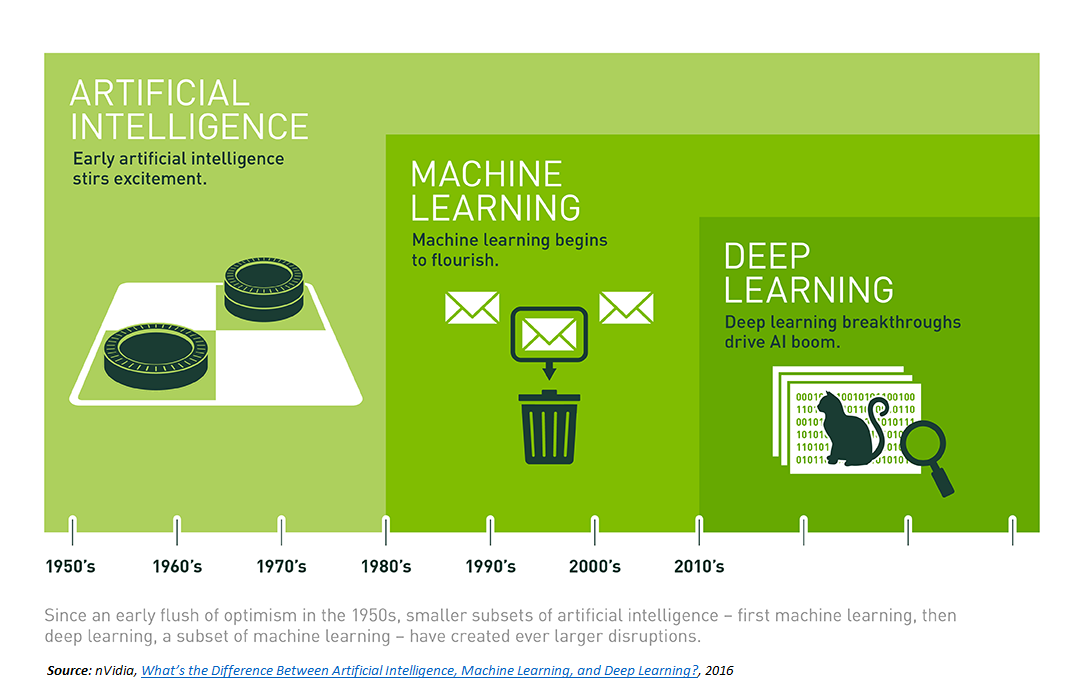Do you have a potential use case, data set or concept that could be tested quickly with WFP’s Innovation Accelerator? If so, please contact Jamie Green at global.innovation@wfp.org.
By Jamie Green and Nadia Papasidero
Artificial Intelligence (AI) technology is fast approaching the peak of the hype cycle for emerging tech, located where Bitcoin was a couple of years ago and 3D printers before that. Start-ups working on AI materialise on a daily basis, planning to disrupt and improve our businesses and lives. So, can this technology help improve the lives of the bottom billion?
When most of us think of AI, our minds quickly turn to Terminator or Skynet or other scary sentient robots. Yet, we all interact with it on a daily basis, in ways most of us are only vaguely aware of. Every time Facebook recognises your friend’s face in a photo, Amazon recommends the purchase of a book or you ask Siri to set an alarm, you are dealing with an AI system.
Beyond recognising that AI is already being integrated into established technologies and industries, it is worth noting that not all AI is the same. We can break AI down into two categories nicely summarised by Wait But Why: Artificial Narrow Intelligence and Artificial General Intelligence. The first one enables machines to specialise on one area or skill – beating the world champion of chess. The second aims more generally to recreate human intelligence in machines.
From Artificial Intelligence to ‘Deep Learning’
Although the goal of Artificial General Intelligence remains some way off, narrow AI systems have recently made a series of breakthroughs that have surpassed predictions. For instance, a programme by Google’s Deepmind - AlphaGo - publicly beat top Go (a strategy game) player Lee Sedol in March 2016. Before AlphaGo, experts thought that it could be decades before a computer could ever master the game, if ever. The board game Go is an order of magnitude more complex than Chess - in which computers surpassed human abilities way back in the early 90’s. AlphaGo was able to master the Go game thanks to breakthroughs in a subfield of AI called machine learning, and even more specifically to a further subfield called ‘deep learning’. The terminology here may sound a bit confusing, especially as the terms are often used interchangeably, but the diagram below can help to understand how they relate.

Deep learning relies on ‘neural networks’, layers upon layers of software that mimic neurons in a human brain. This allows the software to learn without being specifically programmed. For example, if you feed a neural network enough pictures of a dog, it will learn to recognise pictures of dogs. The explosion of deep learning applications is being facilitated in large part by the explosion in data creation (lots more pictures of dogs) and the wide availability of powerful cloud computer services able to run millions of computations (to analyse all the pictures of dogs).
How could AI help the hungry?
Playing games and recognising pictures of dogs isn’t enough to sustain the fanfare alone. AI algorithms have made incredible progress across a wide range of industries, such as identifying skin cancer and self-driving cars. The humanitarian sector is no different than others when faced with the disruptive potential of AI. From intervention in high-risk areas to the use of automatic data interpretation for rapid action, AI presents unmissable opportunities to accelerate the fight against hunger.
Humanitarians are racing to uncover use cases - challenges known, or perhaps unknown - that when merged with AI could spell significant efficiency gains and make a tangible impact on the lives of millions of people worldwide. From enhanced communication interfaces that give us a better understanding of the people we help to automated transport and logistics systems, organisations like WFP and its Innovation Accelerator are primed to take advantage of the technology to help us reach Zero Hunger faster.
For the benefit of society, the use and development of AI must be balanced with a rights based approach; one that puts people’s needs first. The human-centred focus adopted by WFP’s Innovation Accelerator highlights the importance of matching high-tech solutions with real humanitarian challenges to rapidly advance the achievement of the SDGs by 2030. At WFP, we are looking for use cases, data sets or concepts that can be tested quickly ranging from areas of work such as climate change resilience, supply chain as well as geospatial analysis. To date we've only scratched the surface of what AI can achieve. Beyond recognising pictures of man's best friend (sorry, more dogs), we think it has the power to transform the world we live and help provide a better, hunger free future.


